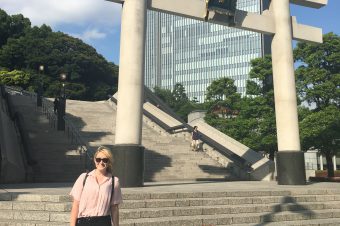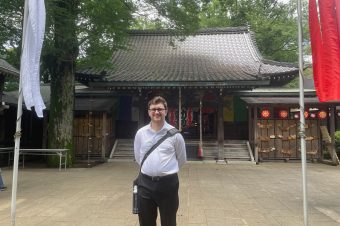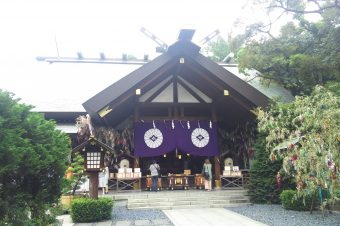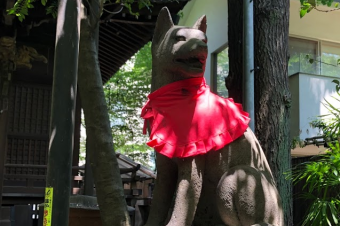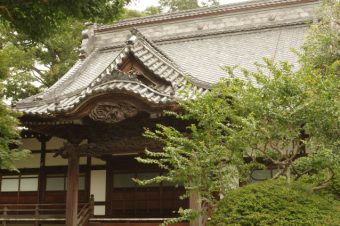Toranomon Kotohiragu Shrine was established in 1660 by Takakazu Kyogoku, the lord of the Marugame Domain at the time. In 1679, the shrine was relocated to the unlucky southwest direction of Edo Castle, where the Imperial Palace sits today. In 1889, it took on its current name. The kami of the shrine is Omononushi, the god of tranquility on land and sea, agriculture, and all people being peaceful and tranquil. Toranomon Kotohiragu sits about one minute away from Toranomon Station and Toranomon Kotohira Tower is located on the grounds of the shrine. Due to its location, it is in an urban area of Tokyo so it may be missed by tourists if they are not particularly searching for it. Toranomon Kotohiragu’s main torii gate is set very close to the sidewalk and blends in with the surrounding buildings. As this was the first shrine that I visited, I did not expect it to be in such a busy area of the city.
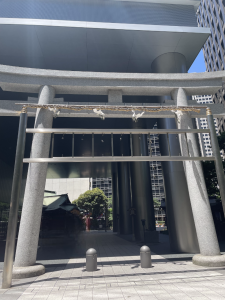
Now for some shrine etiquette!
First off, make sure to stick to either the left or right side of the pathway throughout the shrine. Walking in the middle is seen as disrespectful because this is where the kami (the gods in the Shinto religion) pass through.
Prior to passing through the torii gate, make sure to bow once to pay respect to the kami. If you ever forget the manners of a shrine, do not worry, and just mimic what the locals are doing. After passing through the torii gate, you are met with the approach or sandō, which in Toranomon Kotohiragu’s case, is made up of a stone walkway with two traditional Japanese wooden lanterns on each side.
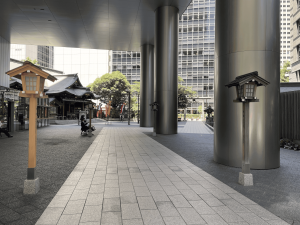
As you make your way down the walkway, you will see a temizuya or ablution station to wash your hands and mouth prior to worshipping. The washing of your hands and mouth represent the purification of one’s body and mind. This particular shrine had a second temizuya located across from the haiden or worship building, as well.
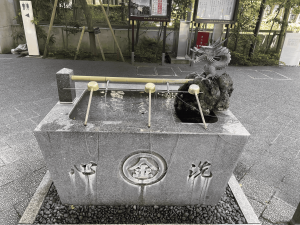
As you approach the worship building (haiden), bow once more before passing through if the building has its own torii gate. After you walk up the stairs to the haiden, throw a coin or two into the prayer box (saisenbako) before bowing twice, clapping your hands twice, and making a prayer/wish to the kami while keeping your hands together. Bow one last time after your prayer/wish is made.
You may use any denomination of yen that you choose while praying, but five yen coins are often used in order to wish for a positive relationship with the gods. The reason for this is that the Japanese pronunciation for five yen (五円 or go-en) is the same as the Japanese pronunciation for relationship (ご縁 or go-en).
Throughout the shrine, you will see numerous paper lanterns with the symbol of the shrine on them, sake barrels, and a display of omikuji or fortune slips.
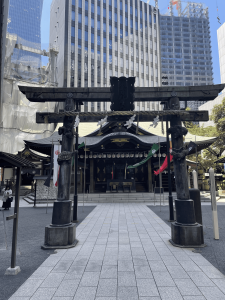
As you are leaving the shrine, make sure to bow one last time (while facing inwards towards the shrine) after you pass through the main torii gate. Thanks for going on this adventure with me of how to practice proper etiquette at a Shinto shrine.
Overall, my first shrine experience was great and it is truly an experience unique to Japan. If you want to learn more about shrines and temples located throughout the country, please see our other articles. Hopefully, some will inspire you to check out these amazing heritage sites during your next visit to the Land of the Rising Sun!

